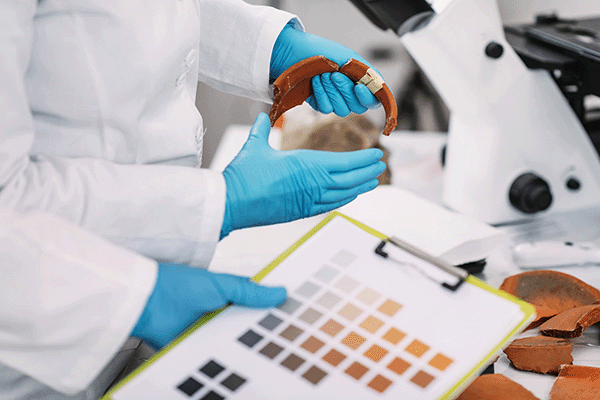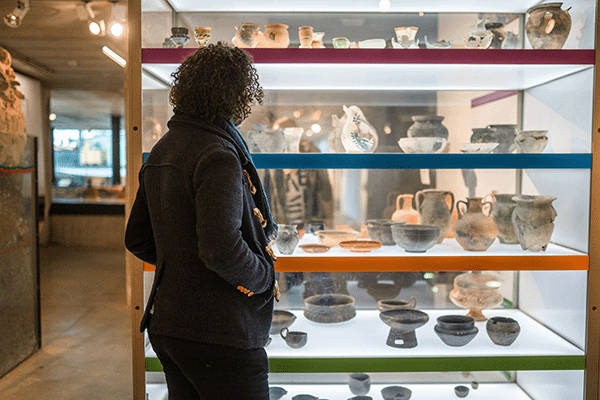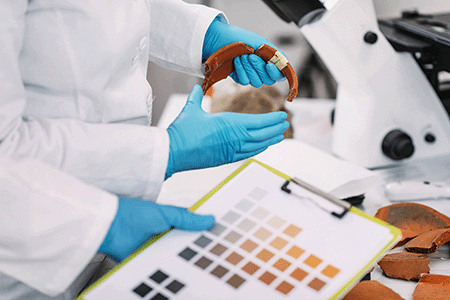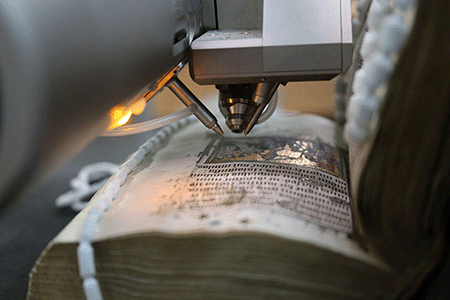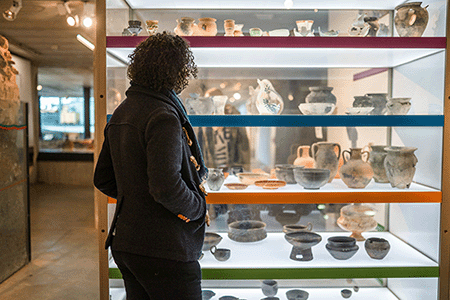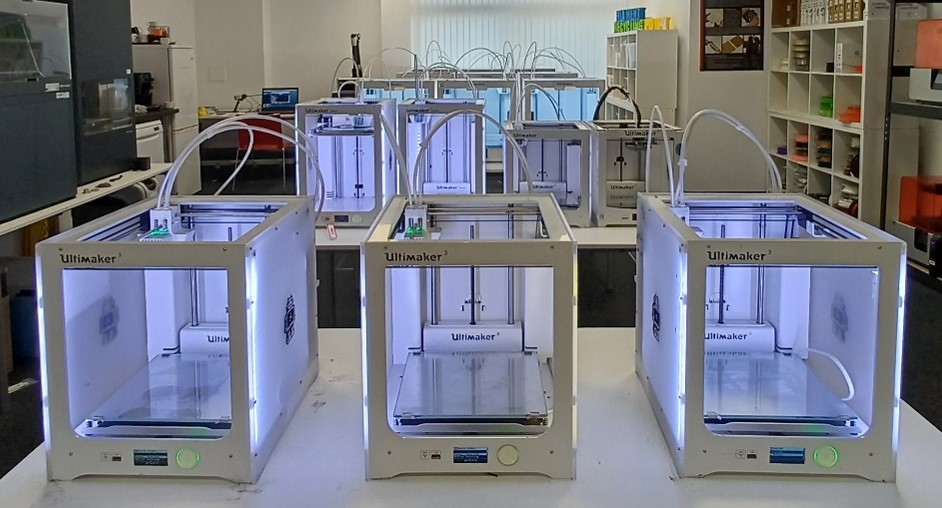The RICHeS team recently had the exciting opportunity to visit two facilities at Manchester Metropolitan University: the centre for Digital Modelling and Analysis for Conservation and Heritage (D-MACH) and PrintCity. During the visit, the team met with Dr Ben Edwards, Reader in Heritage and Archaeology, and Project Lead for the Tranche 1 Facilities RICHeS Funded project, along with colleagues from PrintCity. These facilities are at the forefront of cutting-edge technologies like 3D additive manufacturing, 3D scanning and other digital fabrication methods that play a crucial role in revolutionising how we conserve, understand and preserve heritage artefacts. The visit served as an opportunity to explore the future of digital heritage, gaining valuable insights into how digital technologies are transforming cultural heritage science research and conservation.
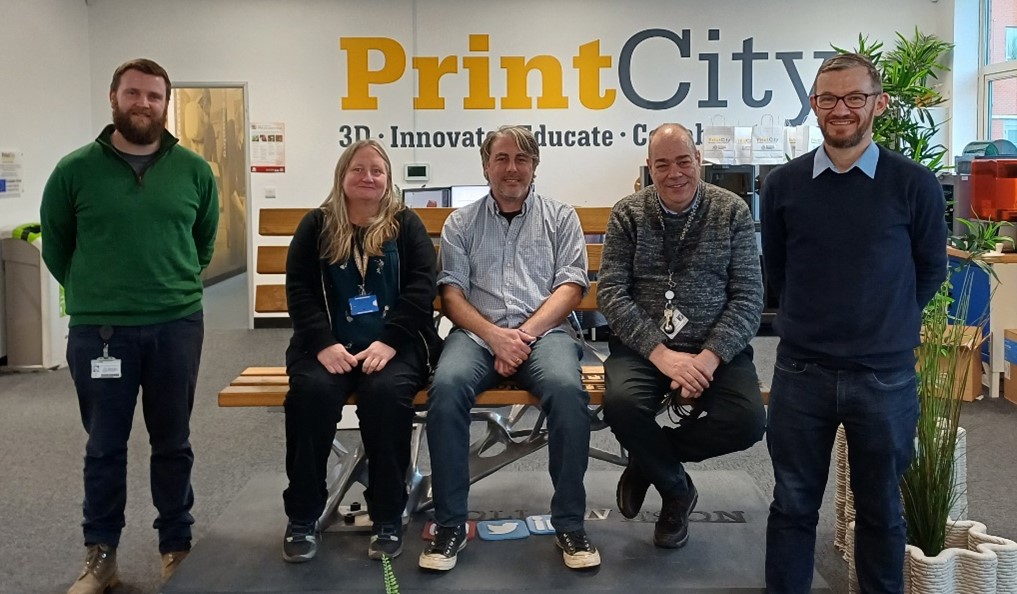
Exploring PrintCity: shaping the future of digital manufacturing
The RICHeS team were introduced to PrintCity, an innovative facility dedicated to advancing the future of digital manufacturing. This state-of -the-art service is equipped with a diverse range of 3D scanning and printing technologies including devices that work with resins, powders, mortars and even fabrics. By leveraging its extensive 3D scanning capabilities, PrintCity is making significant contributions to the growing field of additive manufacturing, enabling the precise reproduction of artefacts and the creation of innovative designs. This has wide-ranging implications for heritage science and conservation such, not only in the recreation of artefacts for handling collections but also in producing reproductions with micron-level accuracy (one thousandth of a millimetre). This high precision facilitates destructive analyses and testing, enabling research without risking the integrity of the original objects.
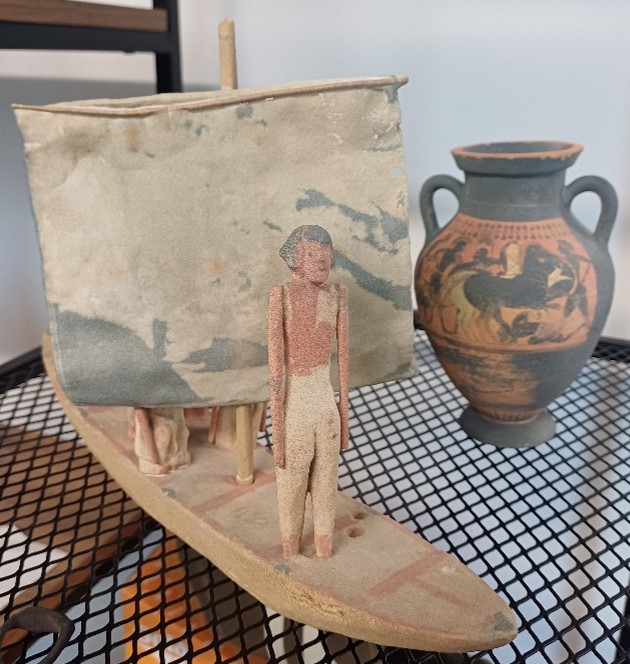
PrintCity offers open teaching spaces that foster a natural environment for collaboration, encouraging learning and the exploration of new technologies. The facility if a hub of innovation, constantly evolving with the latest advancements in digital manufacturing. Located next door is the RICHeS funded D-MACH facility which is beginning to take shape and will become an integral part of the University’s dynamic research ecosystem.
D-MACH: advancing the future of digital heritage preservation and conservation
The D-MACH facility is set to transform the study and preservation of cultural heritage. Through the application of advanced technologies, the centre is opening new doors for researchers, conservators and heritage professionals. D-MACH is equipped with state-of-the-art equipment including Computed X-ray Tomography (XCT) which allows for non-destructive analysis of artefacts at microscopic levels; 3D scanning for detailed digital mapping, and hyperspectral imaging that can identify the chemical composition of materials. These techniques enable researchers to unlock new insights into the structure, composition and condition of artefacts, helping preserve them for future generations.
One of the most exciting aspects of D-MACH is its commitment to multi-technique integration, combining various digital technologies to provide a holistic view of artefact conservation. D-MACH is also focused on making these advanced resources accessible to a wider audience, offering tools and expertise to regional museums and institutions that traditionally lack such resources. With its growing infrastructure, D-MACH is positioned to play a crucial role in advancing digital heritage preservation and conservation strategies for years to come.
Looking ahead: the future of digital heritage technologies
The visit to PrintCity and D-MACH highlighted the potential of collaboration and innovation in the field of digital manufacturing and heritage science conservation. The groundbreaking work being done at both facilities highlights how digital tools are revolutionising the way we understand and preserve our cultural heritage. From 3D scanning and additive manufacturing to cutting-edge imaging techniques, these technologies are allowing for more precise, non-destructive analysis of artefacts than ever before.
As D-MACH continues to evolve, we can expect further developments and innovations in digital heritage technologies. As a hub for knowledge-sharing, training and professional development, the facility is committed to upskilling the next generation of heritage professionals. By equipping researchers, conservators, and technologists with the skills needed to leverage advanced digital technologies, D-MACH is ensuring that future heritage preservation efforts are sustainable and effective.
Stay updated
The future of heritage preservation is bright, and facilities like D-MACH and PrintCity are leading the way. To stay updated on D-MACH’s latest projects, collaborations and opportunities, be sure to visit their new website: D-MACH.
For more updates from RICHeS, and to hear about our other ongoing projects, visit the RICHeS News and Events Page. Together, we are shaping the future of cultural heritage preservation and ensuring that the stories of our past are preserved for future generations.

